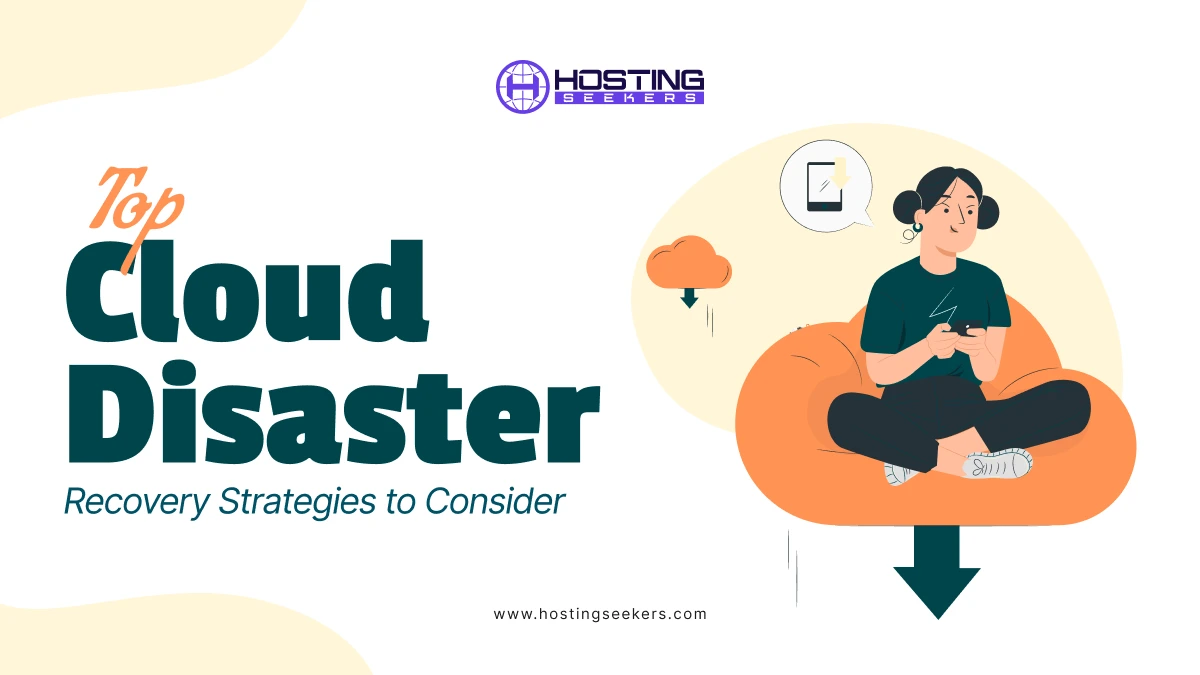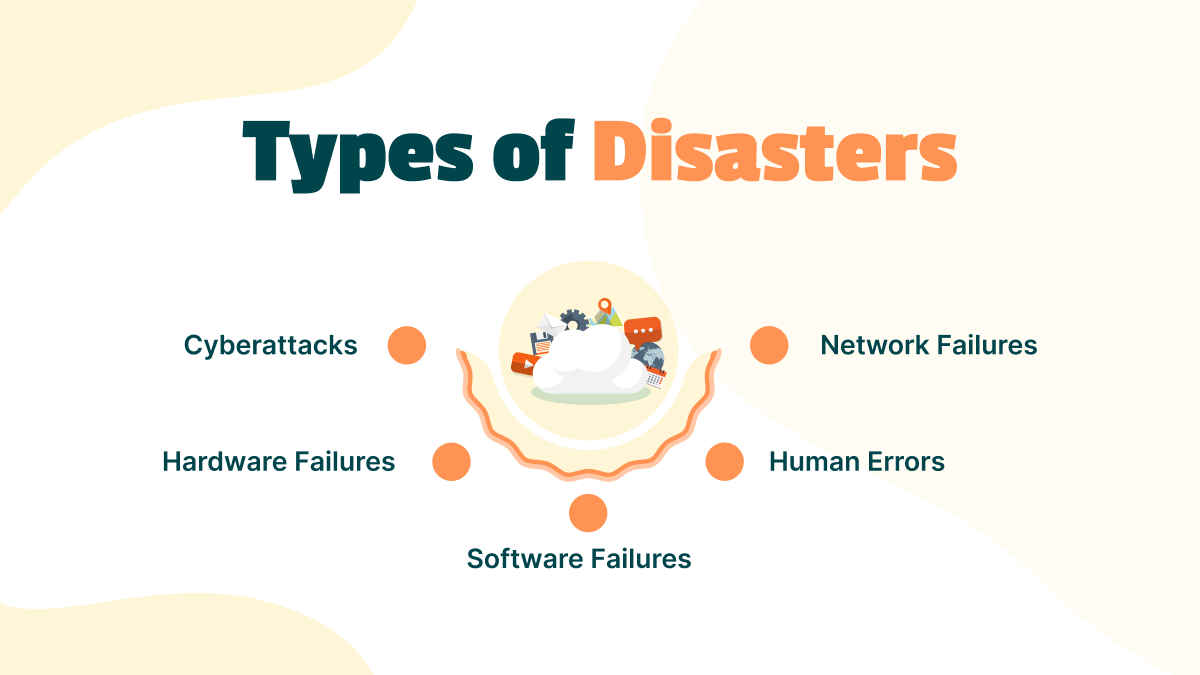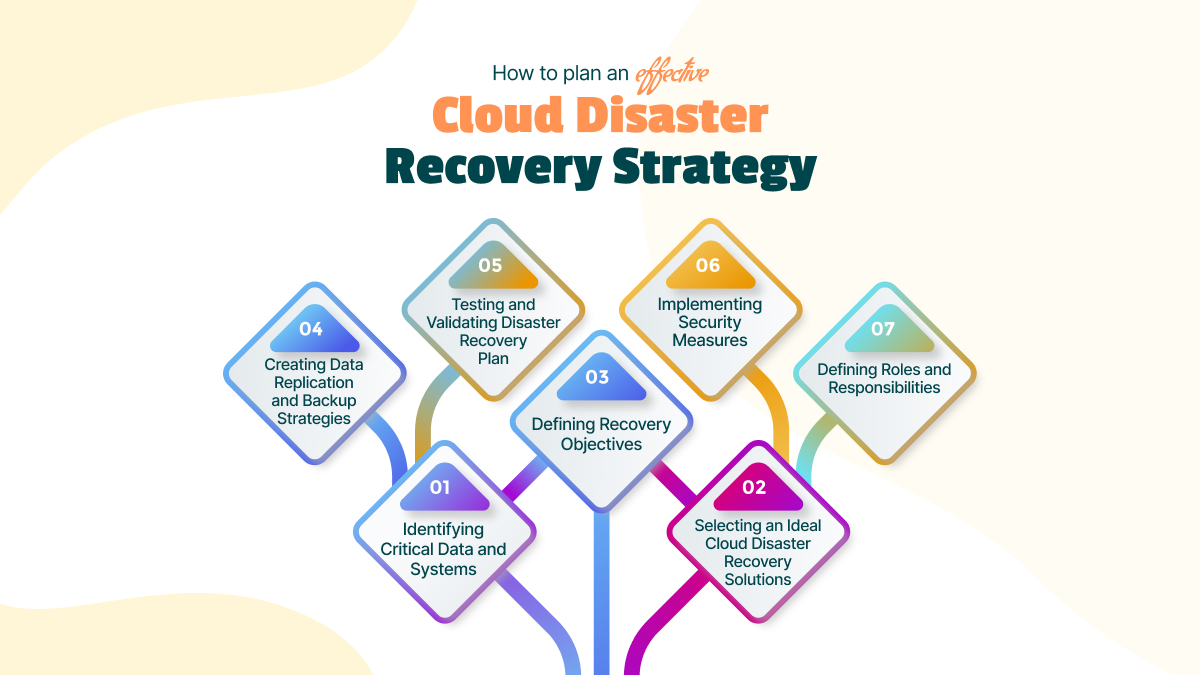
How to Plan an Effective Cloud Disaster Recovery Strategy?
Cloud Industry Published on Date: April 11th 2024Cloud is the most reliable data storage center, which is the most demanding in the competitive landscape. But if there’s any incident with the cloud or its failure, it may cause the business a huge loss.
So, to avoid any such mishaps, it’s vital to be ready with a cloud disaster recovery plan. It’s not only about backing up your data but also making sure that your business operates with less downtime. In this blog, we will walk through how you can implement an effective cloud disaster recovery strategy without losing your data.
What is Cloud Disaster Recovery?
As a security measure, cloud disaster recovery (CDR) is a method for keeping copies of electronic documents in a cloud environment and managing them. Offering businesses a means of managing business continuity and data recovery in the case of a disaster is the aim.
Cloud disaster recovery (CDR) is simple to configure and maintain, as opposed to conventional alternatives. Companies no longer ought to waste a lot of time transmitting data backups from their in-house databases or hard drives to restore after a tragedy. The cloud optimizes these procedures, decisions, and information retrieval.
Types of Disasters
Cyberattacks
Attacks like DDoS or ransomware can affect business operations and compromise sensitive data.
Hardware failures
Old infrastructure or manufacturing can lead to unexpected downtime and loss of data.
Software failures
Bugs can cause data loss, corruption, or unavailability.
Human Errors
Accidental modifications or deletions of data can cause significant operational disruptions.
Network Failures
These network failures can prevent access to critical data and applications, impeding business operations.
Planning an Effective Cloud Disaster Recovery Strategy
1. Identifying Critical Data and Systems
The very first step in cloud services and disaster recovery planning is to identify the vital systems and data that need protection. You can conduct a thorough investigation of your organization’s IT infrastructure, applications, and data to determine which resources are vital for business operations.
Select the factors like impact of data sensitivity, downtime and regulatory compliance requirements. Also, by prioritizing valuable, sensitive data, you can allocate resources effectively to make sure you create a focused approach to disaster recovery.
2. Define Recovery Objectives
Defining recovery objectives is an essential step in crafting effective disaster recovery plans. This includes determining the acceptable recovery point objective (RPO) and recovery time objective (RTO) for each data application and set.
Also, the RTO signals the maximum allowable downtime, while the RPO presents the maximum allowable data loss in case of disaster. Also, balancing these objectives makes sure that you have a clear understanding of how quickly you need to recover and how much data you can afford to lose.
3. Select Cloud Disaster Recovery Solutions
There are numerous cloud solutions to select from, each catering to different business requirements. From the more traditional non-premises solutions to cloud-based disaster recovery as a service (DRaaS) offerings, the right cloud service model depends on various factors like your expertise, budget, and other desired levels of automation.
Also, cloud-based solutions offer automation, scalability, and reduced maintenance efforts, making them an attractive option for modern businesses.
4. Data Replication and Backup Strategies
Data backup and replication are the most vital factor of any cloud disaster recovery planning. You can ensure that you have an alternative data backup strategy in case there is any mishap or cyberattack.
Automated backups, combined with retention policies and versioning, offer additional layers of protection against accidental deletions or data corruption.
5. Testing and Validating Disaster Recovery Plans
Regular monitoring and testing validation are vital to ensuring the effectiveness and reliability of your cloud disaster recovery plan. So, it’s vital to conduct periodic drills and exercises to simulate various disaster scenarios and evaluate the recovery process.
Also, you can test the failover capabilities, recovery time objective data restoration procedures, and system functionality to verify that the recovery objectives are met. Moreover, testing helps to identify gaps and also familiarizes the recovery team.
6. Implementing Security Measures
Security is a critical factor in any disaster recovery plan. When using cloud-based solutions, it is vital to implement robust security measures to protect your data during storage, replication, and recovery. So, check out the security features offered by your selected cloud server providers, like access controls, encryptions, and threat detection.
Also, you can implement appropriate authentication mechanisms to make sure that only authorized personnel can access the disaster recovery site or environment. In addition, regularly assess and update your security measures to address emerging vulnerabilities and threats.
7. Define Roles and Responsibilities
Having clarity in roles and responsibility at the time of disaster is vital for the easy execution of your recovery plan. Assign dedicated teams or individuals responsible for executing the disaster recovery testing, procedures, and other ongoing maintenance.
Also, regular training and mock drills make sure that everyone is well prepared and confident in their role when disaster strikes.
Summing Up
All organization can face difficulties and challenges, whether it is a cyberattack, natural disaster or an IT failure. The recovery process can be more expensive, complex and time-consuming. Therefore, it’s better to be prepared. A disaster recovery plan offers organization a process for responding to various incidents. Along with business continuity planning, it is a vital strategy for managing and organizing the growing risk of disaster and business failure.
Frequently Asked Questions
Q 1: Why is cloud disaster recovery important?
Ans: There can be sudden attacks that can cause damage to any firm. Cloud disaster recovery helps them restore vital documents. Also, a cloud disaster recovery system helps the company restore their data and files with the use of cloud services.
Q 2: How does disaster recovery as a service work?
Ans: Disaster recovery as a service is a cloud computing assistance model that authorizes a firm to back up its data and IT infrastructure on a particular cloud computing platform.
Q 3: What are the benefits of using the cloud for disaster recovery?
Ans: Some of the benefits of cloud disaster recovery solutions include scalability, cost-effectiveness, flexibility, and accessibility.
Q 4: How often should I update my cloud disaster recovery plan?
Ans: Review and update your cloud disaster recovery plan regularly, at least annually.
Q 5: How do you ensure data security and compliance?
Ans: You can add various strategies with various access controls, encryption, and compliance monitoring tools to ensure data and regulatory compliance in the virtual environment.

